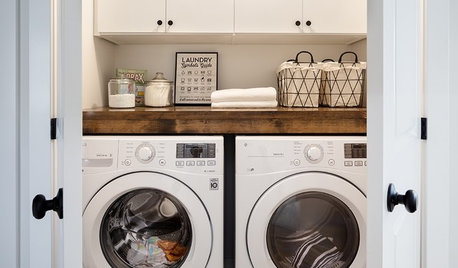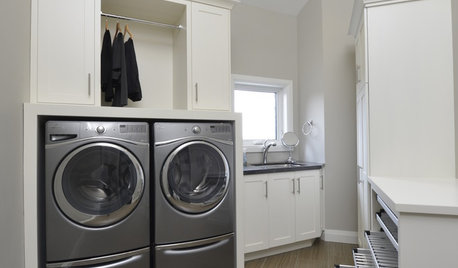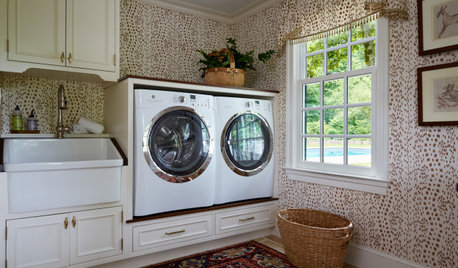laundry washer drain pipe
Kim
last month
Related Stories

REMODELING GUIDESContractor Tips: Advice for Laundry Room Design
Thinking ahead when installing or moving a washer and dryer can prevent frustration and damage down the road
Full Story
LAUNDRY ROOMS10 Small-But-Mighty Laundry Stations for an Easier Washday
See how to get an efficient and attractive washer-dryer setup by tucking it in a closet or a multipurpose room
Full Story
KITCHEN DESIGNRenovation Detail: The Kitchen Laundry Room
Do your whites while dishing up dinner — a washer and dryer in the kitchen or pantry make quick work of laundry
Full Story
LAUNDRY ROOMSThe Cure for Houzz Envy: Laundry Room Touches Anyone Can Do
Make fluffing and folding more enjoyable by borrowing these ideas from beautifully designed laundry rooms
Full Story
THE HARDWORKING HOMEWhere to Put the Laundry Room
The Hardworking Home: We weigh the pros and cons of washing your clothes in the basement, kitchen, bathroom and more
Full Story
MOST POPULAR10 Smart Ideas for Your Laundry Room Remodel
Make washing and drying easier and more comfortable by considering ergonomics, storage and special features
Full Story
LAUNDRY ROOMSClever Ways to Hide a Laundry Station
When you don’t have a whole room to devote to the wash, use these solutions to tuck the machines out of view
Full Story
LAUNDRY ROOMSLuxury of Space: Designing a Dream Laundry Room
Plan with these zones and amenities in mind to get a laundry room that takes function and comfort to the max
Full Story
LAUNDRY ROOMS7-Day Plan: Get a Spotless, Beautifully Organized Laundry Room
Get your laundry area in shape to make washday more pleasant and convenient
Full Story
HOUZZ TV LIVE3 Laundry Room Ideas You Might Not Have Thought Of
Three home design professionals share smart ideas that could significantly improve the function of your space
Full Story






HU-432451269
KimOriginal Author
Related Professionals
Carson Kitchen & Bathroom Designers · Freehold Kitchen & Bathroom Designers · Waianae Kitchen & Bathroom Designers · Champlin Kitchen & Bathroom Remodelers · Kettering Kitchen & Bathroom Remodelers · Indian Creek Cabinets & Cabinetry · Land O Lakes Cabinets & Cabinetry · Santee Custom Closet Designers · Stuart Custom Closet Designers · Faribault Flooring Contractors · Gallatin Flooring Contractors · Oak Park Flooring Contractors · Stamford Flooring Contractors · Fullerton Kitchen & Bathroom Remodelers · Walnut Creek Kitchen & Bathroom RemodelersKimOriginal Author
3onthetree
jrb451
KimOriginal Author
jrb451
Jake The Wonderdog
woodbutcher_ca
KimOriginal Author
Jake The Wonderdog
3onthetree
Stax